The Fused Glass Art Of Frank Thompson
By Karla Wall
Local artist and craftsman Frank Thompson’s mother, not too long ago, showed him a piece of children’s art, obviously a kindergartner’s or a primary school student’s class project. It was a piece of paper, layered over with colored pieces of construction paper in odd shapes, outlined by black crayon. A child’s version of a stained glass window.
“Where did you get this? Who did it?” Thompson asked his mom.
She turned it over and showed him what was written on the back.
“Frank. 1965.”
When I visited Thompson recently in his charming studio/workshop near Gillis, he was putting the final touches on about 20 stained glass pieces he was preparing to take to the Red River Revel art festival in Shreveport the next day, one of many shows he’s got booked for the next few months. An award for best in show at this year’s New Orleans Jazz Festival hangs on the shop wall, along with ribbons and awards from other regional shows.
Thompson’s latest stained glass project, he tells me, is no. 723 (all of his pieces are signed and numbered). His work hangs in high-end homes, churches and galleries. He’s earned a reputation in the art world, and among home and business owners, for his beautiful and unique stained glass pieces.
“I guess you could say I’m doing what I’ve dreamed of since I was young,” Thompson says.
A Born Craftsman And Artist
Not that Thompson has limited his efforts to stained glass.
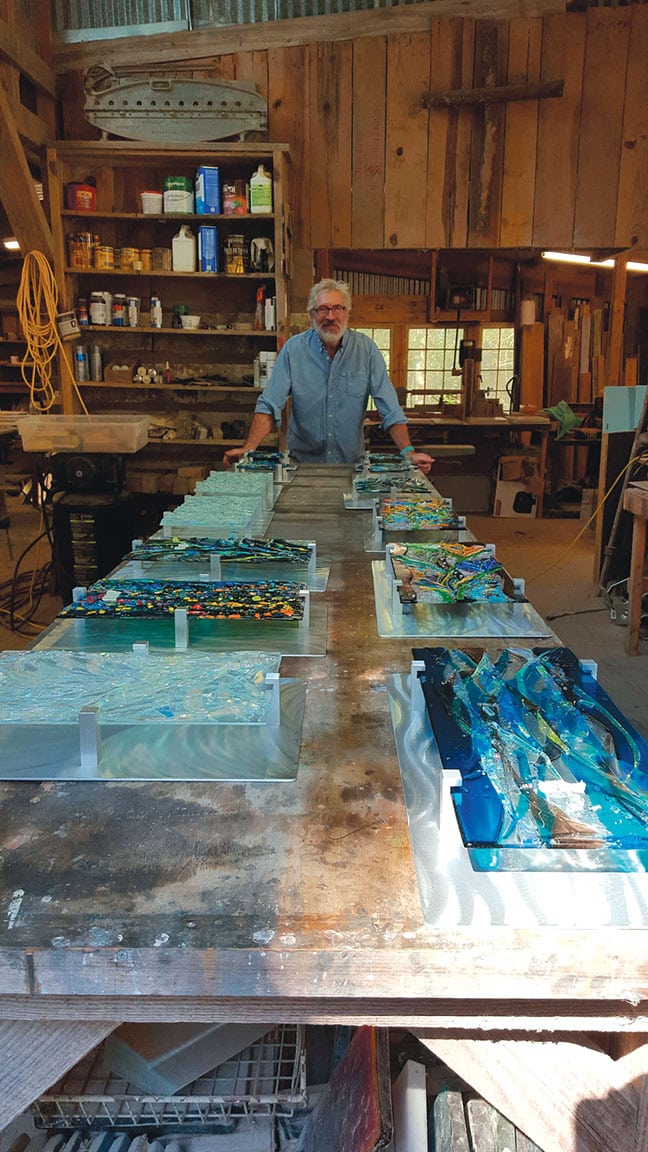
It wasn’t until much later, as a young man just graduated from St. Louis High School, that he undertook stained glass work. Opting, not surprisingly, to work in construction right out of high school, Thompson lived with his grandmother while saving money for his own place. He found himself, one day, wandering through art shops in Houston, and began searching for a gift for his grandmother — a way of thanking her for allowing him to stay with her.
He was fascinated by a large stained glass piece with a Mediterranean theme, and asked the clerk to sell him the supplies to make it, planning to make it for his grandmother. No, he told the clerk, he didn’t want to take classes first; he wanted the supplies, which turned out to be about a $350 investment.
It was to be his first “real” stained glass project.
But, still, stained glass work wasn’t his focus. He married his wife (and, as he says, his most-capable business manager), Eva, and built their home himself, a beautiful two-story cedar home, full of polished natural wood and glass, in Gillis. Much later, he would quit his work in construction, and devote all of his time to his woodworking hobby, turning out exquisitely cut and carved wood doors that began to grace high-end homes all over the Lake Area. He’d added a workshop on the property, by then, and began learning to work in wrought iron, first to accent his doors, then to create entire art pieces.
Call It A Sign
Thompson also turned back to stained glass work during this time, producing windows for homes and, particularly, churches in the area.
Then Hurricane Rita made her appearance.
Thompson had been working on stained glass crosses, to be sold as a fundraiser to help his son, who was about to enter the seminary, make a trip to Rome.
He had about two dozen of the crosses made, and laid out on a table, when the family had to evacuate for Rita. When he returned, he found the workshop devastated. Nothing was standing as he’d left it.
Except for the crosses.
“They were still on the table, laid out and unbroken. I said, ‘Okay, Lord, I can take a hint,’” he told me not too long after the storm.
Hurricane recovery kept Thompson busy for the next couple of years, as he made stained glass windows, doors and other pieces for churches and homes being rebuilt after the storm. That work ended, of course, and he focused on his by-then-quite-popular stained glass crosses, with a few window projects here and there. But the crosses proved to be too little reward for too much effort, he says.
And he began to notice that, at shows he attended to showcase his crosses, he kept hearing the same comment:
“People kept telling me, ‘I have blinds over my window, stained glass won’t work,’ or ‘I have much more wall space than window space,’” Thompson says.
Motion And Energy
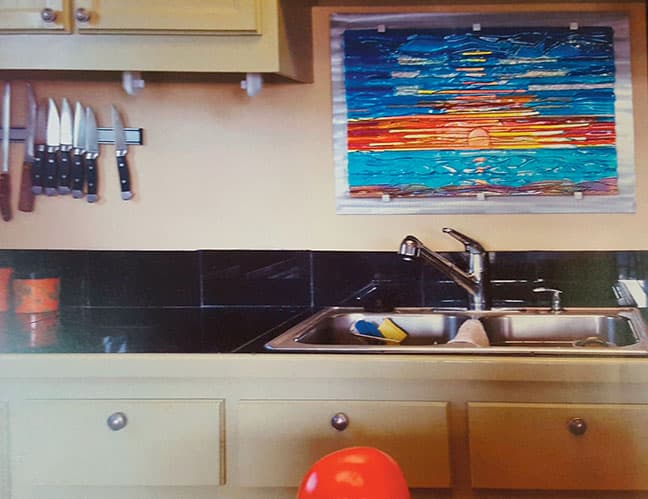
He knew he needed a material that would reflect ambient light through the glass, which he had decided he would mount a couple of inches away from the material using metal brackets.
“I tried a mirror first, but that just reflected everything in the room, including me, through the glass. And that wasn’t good,” Thompson quips.
He then tried brass and copper, which didn’t work. Then he thought of the aluminum sheets he used in his metal work. That was the material he’d been looking for.
“Aluminum is reflective, adds light, is cheap, and is easy to manipulate,” he says.
The result is a unique stained glass work that adds light, energy and motion, no matter where it’s hung. The pieces, unlike normal stained glass art, seem to flow and move — to dance.
“It’s dynamic; it’s not static, like a window,” Thompson says of his work. “When light hits the aluminum, it’s reflected back through the glass, giving the piece movement and energy. I call it wall jewelry.”
Thompson’s work is mostly ocean- and tropical-themed, reflecting natural colors such as blue, green and coral, and you get the sense of waves moving, and kelp or coral moving in the water.
“I’d have to say my work is mostly indicative of the Gulf Coast,” he says.”
Even Thompson’s busiest work, the multi-colored and multi-shaped Paradisius, is calming.
The Process
Thompson says a typical work, which ranges anywhere from 8 x 16 in. to 60 x 30 in., takes about one or two weeks to finish. Once he’s got the design firmly in mind, he begins by layering pre-cut pieces of colored glass over a clear glass layer, to create the design he wants. The glass is then fired in a large kiln to about 1,500 degrees, which fuses the glass together to create the finished product.
The finished glass is then attached to a sheet of aluminum that’s been hand-ground and polished, using aluminum brackets that raise the glass about 2 in. above the aluminum when laid flat. Thompson uses the grinder to “shape” the aluminum to fit the pattern of the glass, which adds the motion effect to each piece.
A Growing Reputation
Thompson’s earned quite a reputation among his peers. He attends numerous shows in the spring and fall, in Galveston, Houston, Atlanta, Baton Rouge, Pensacola, Corpus Christi and Lafayette. And even getting invited to attend the shows is prestigious.
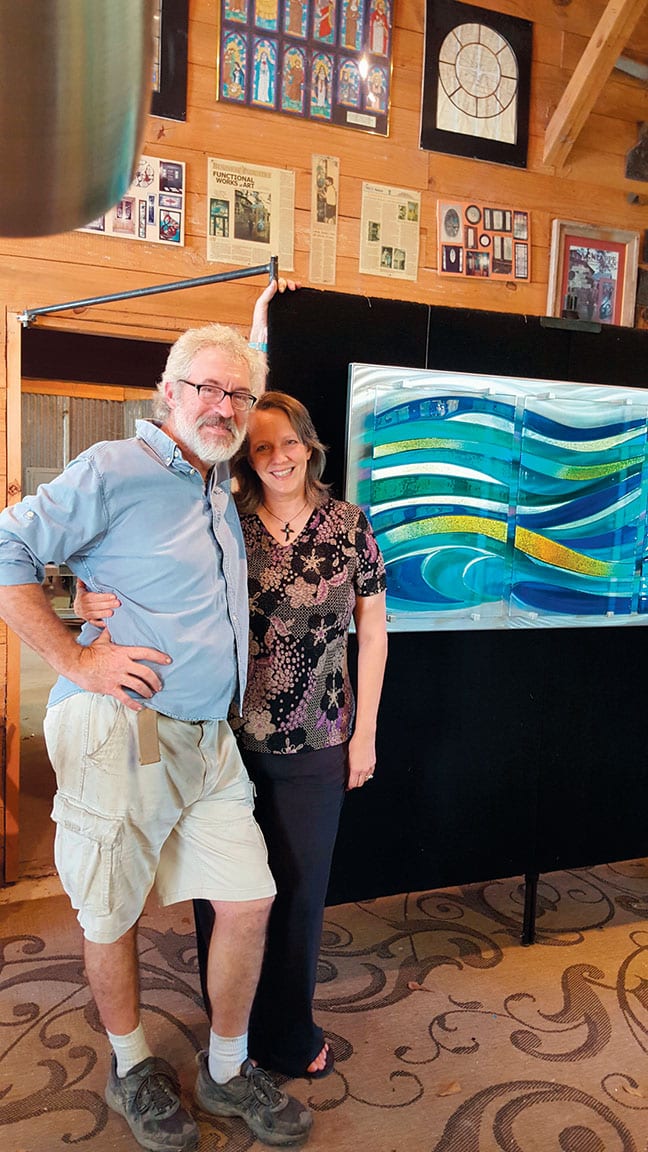
And indeed he is. Not only has he won best in show in New Orleans, but he’s also won best in show in Galveston’s Octoberfest, and best in show in Corpus Christi’s Festival of the Arts, an award of excellence in Pensacola’s Art in the Park event, and a judge’s award in the Orange Beach (Ala.) Art Festival, among many other awards.
Thompson’s works hang in businesses, some hospitals and restaurants, but mostly, he says, in high-end homes and condominiums, and in any room — from bathrooms to kitchens to home offices.
“Some people want a nice, large piece to put over a sofa in the living room,” Thompson says. “Others want a smaller piece for a kitchen or bathroom.”
Not surprisingly, given the theme of most of his work, it hangs in a lot of beach houses.
As if they weren’t busy enough with shows and commissions, the Thompsons just finished renovating the workshop, “to make it more efficient,” Thompson says. And a new gallery and visitor center should be completed by next summer.
For more on Thompson’s work, visit frankthompson.com.



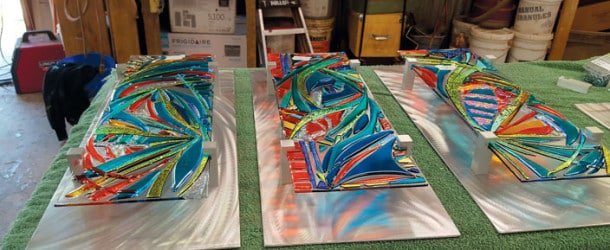
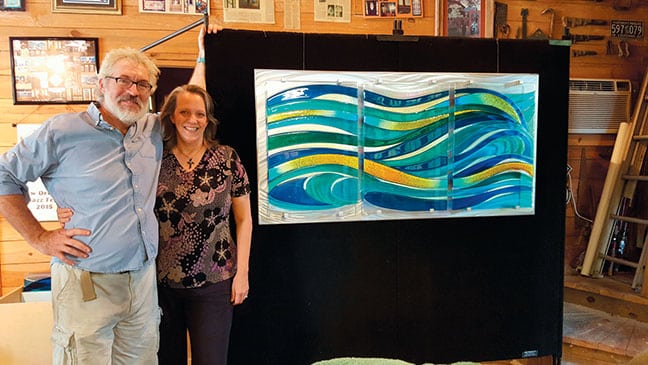
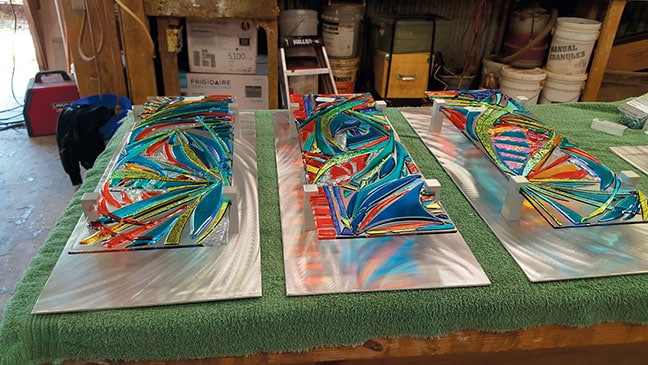
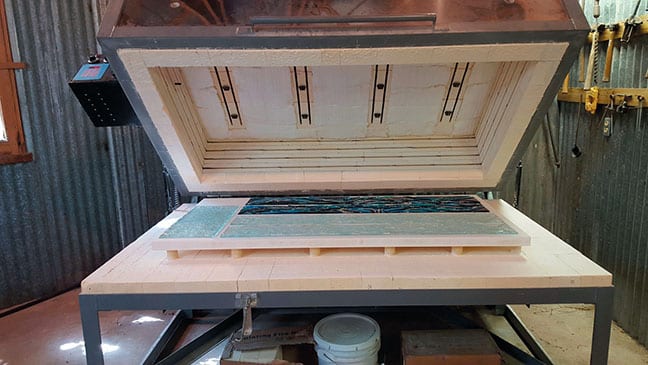












Comments are closed.